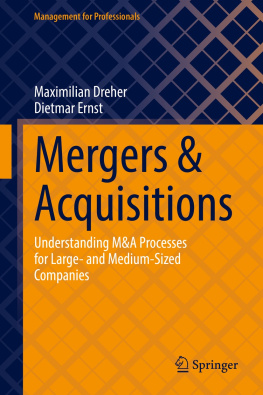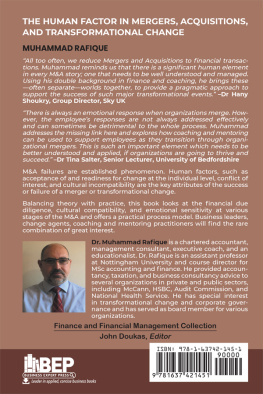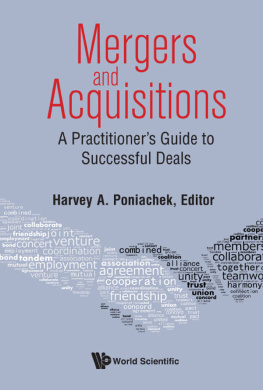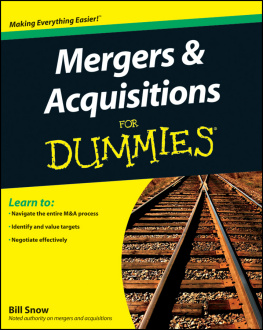Mark L. Feldman - Five Frogs on a Log: A CEOs Field Guide to Accelerating the Transition in Mergers, Acquisitions and Gut Wrenching Change
Here you can read online Mark L. Feldman - Five Frogs on a Log: A CEOs Field Guide to Accelerating the Transition in Mergers, Acquisitions and Gut Wrenching Change full text of the book (entire story) in english for free. Download pdf and epub, get meaning, cover and reviews about this ebook. year: 2010, publisher: HarperCollins, genre: Business. Description of the work, (preface) as well as reviews are available. Best literature library LitArk.com created for fans of good reading and offers a wide selection of genres:
Romance novel
Science fiction
Adventure
Detective
Science
History
Home and family
Prose
Art
Politics
Computer
Non-fiction
Religion
Business
Children
Humor
Choose a favorite category and find really read worthwhile books. Enjoy immersion in the world of imagination, feel the emotions of the characters or learn something new for yourself, make an fascinating discovery.

- Book:Five Frogs on a Log: A CEOs Field Guide to Accelerating the Transition in Mergers, Acquisitions and Gut Wrenching Change
- Author:
- Publisher:HarperCollins
- Genre:
- Year:2010
- Rating:3 / 5
- Favourites:Add to favourites
- Your mark:
Five Frogs on a Log: A CEOs Field Guide to Accelerating the Transition in Mergers, Acquisitions and Gut Wrenching Change: summary, description and annotation
We offer to read an annotation, description, summary or preface (depends on what the author of the book "Five Frogs on a Log: A CEOs Field Guide to Accelerating the Transition in Mergers, Acquisitions and Gut Wrenching Change" wrote himself). If you haven't found the necessary information about the book — write in the comments, we will try to find it.
A riddle:
Five frogs are sitting on a log.
Four decide to jump off. How many are left?
Answer: Five
Why?
Because theres a difference between deciding and doing.
Written by Mark L. Feldman and Michael F. Spratt of PricewaterhouseCoopers, Five Frogs on a Log offers readers an entertaining and no-nonsense field guide to the mergers and acquisitions jungle, packed with insight and instruction for executing corporate change and capturing shareholder value. Whether youre buying another company or acquiring a new vision of the future, this book proffers an unconventional perspective and a practical, readily accessible set of solutions to the single greatest challenge facing todays managers: executing rapid transitions ion mergers, acquisitions and gut wrenching change.
Designed for corporate managers and CEOs caught up in the whirlwind of change, every chapter provides accessible ideas and wisdom for navigating the most demanding business transitions. The authors offer a unique hands-on perspective based on their work with top Fortune 500 firms. As they state:
Increasingly, the companies that win are those that learn faster, act quicker and adapt sooner. They will compress time by making and executing early, informed decisions about economic value creation, ruthless prioritization and focused resource allocation. They will use these decisions to take early firm stands on management deployment, organization structure and culture. Their actions will increasingly be linked to long-term, sustained economic value creation.
The advice and expertise offered in this book can be used to solve a range of operational problems from speeding up new product development to merging two businesses; from changing company culture to repositioning a business in a while new marketplace.
Whatever the challenges and opportunities facing you, your company, your industry, Five Frogs on a Log will move you from deciding to doing.
Mark L. Feldman: author's other books
Who wrote Five Frogs on a Log: A CEOs Field Guide to Accelerating the Transition in Mergers, Acquisitions and Gut Wrenching Change? Find out the surname, the name of the author of the book and a list of all author's works by series.












